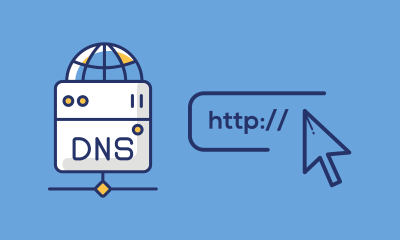The world of domain names and extensions can be confusing, with a wide range of options available for website owners to choose from. While the most recognizable and widely used extension is .com, there are many others that serve specific purposes or target specific industries or regions.
In this guide, we’ll dive into the history and background of some of the most popular domain extensions, including .com, .org, .net, .gov, .edu, and many more. From their creation and intended use, to the benefits they offer, this guide will provide a comprehensive overview of the domain name landscape.
Whether you’re starting a new website, or looking to expand an existing online presence, understanding the story behind domain extensions can help you make informed decisions and choose the right domain for your needs.
The Story Behind Domain Names Extensions
.com – Created in 1985 by the Internet Assigned Numbers Authority (IANA) for commercial use.
The most widely used and recognized domain extension, with over 100 million registered domains worldwide. Benefits include increased brand recognition and credibility, making it easier for customers to find your website.
.org – Created in 1985 by IANA for non-profit organizations.
Used by a variety of entities, including non-profit organizations, with over 10 million registered domains worldwide. Benefits include the association with non-profit organizations and lending credibility and trust to the website.
.net – Created in 1985 by IANA for internet service providers.
Used for a variety of purposes, including internet service providers, with over 15 million registered domains worldwide. Benefits include the association with technology and the internet, lending credibility to websites in the tech industry.
.gov – Created in 1985 by IANA for U.S. government agencies.
Exclusive to U.S. government agencies, with over 2,000 registered domains. Benefits include the association with government agencies and lending credibility and trust to the website.
.edu – Created in 1985 by IANA for educational institutions in the United States.
Exclusive to educational institutions in the United States, with over 4,000 registered domains. Benefits include the association with education, lending credibility, and trust to the website.
.mil – Created in 1985 by IANA for U.S. military organizations.
Exclusive to U.S. military organizations, with over 1,000 registered domains. Benefits include the association with the military and lending credibility and trust to the website.
.int – Created in 1988 by IANA for international organizations established by treaty.
For international organizations established by treaty, with over 500 registered domains. Benefits include the association with international organizations and lending credibility and trust to the website.
.biz – Created in 2001 as an alternative to .com for businesses.
Used by businesses, but less widely used than .com, with over 2 million registered domains worldwide. Benefits include the association with business, making it easier for customers to find websites related to commerce.
.info – Created in 2001 as an alternative to .com for informational websites.
Used for informational websites, with over 10 million registered domains worldwide. Benefits include the association with information, making it easier for customers to find websites with informative content.
.name – Created in 2002 for individuals to use as a personal or family website.
Used by individuals as personal or family websites, with over 2 million registered domains worldwide. Benefits include the ability to create a personal or family-related domain, making it easier for customers to find personal websites.
.pro – Created in 2004 for professionals such as doctors, lawyers, and accountants.
Used by professionals such as doctors, lawyers, and accountants, with over 1 million registered domains worldwide. Benefits include the association with professionals, making it easier for customers to find websites related to professional services.
.co – Created in 2010 as an alternative to .com for businesses worldwide.
An alternative to .com, with over 2 million registered domains worldwide. Benefits include the association with companies and commerce, making it easier for customers to find business-related websites.
.tv – Created in 1991 for television-related sites, but now used for a variety of purposes.
Used for a variety of purposes, with over 2 million registered domains worldwide. Benefits include the association with television, making it easier for customers to find websites related to TV or video content.
.io – Originally created for British Indian Ocean Territory in 1997, but now popular among tech startups.
Popular among tech startups, with over 800,000 registered domains worldwide. Benefits include the association with technology and innovation, lending credibility to websites in the tech industry.
.me – Created in 2008 for personal websites, blogs, portfolios, and resumes.
Used for personal websites, blogs, portfolios, and resumes, with over 2 million registered domains worldwide. Benefits include the ability to create a personal domain, making it easier for customers to find personal websites.
.ca – Created in 1988 as the country-code top-level domain (ccTLD) for Canada.
Exclusive to Canada, with over 2 million registered domains. Benefits include the association with Canada, making it easier for customers to find Canadian websites.
.uk – Created in 1985 as the ccTLD for the United Kingdom.
Exclusive to the United Kingdom, with over 10 million registered domains. Benefits include the association with the UK, making it easier for customers to find UK-related websites.
.de – Created in 1986 as the ccTLD for Germany.
Exclusive to Germany, with over 16 million registered domains. Benefits include the association with Germany, making it easier for customers to find German-related websites.
.fr – Created in 1987 as the ccTLD for France.
Exclusive to France, with over 5 million registered domains. Benefits include the association with France, making it easier for customers to find French-related websites.
Conclusion
In conclusion, the world of domain extensions offers a wide range of options for website owners to choose from, each with its own unique history, benefits, and intended use. Whether you’re starting a new website for your business, creating a personal blog, or establishing a presence for a non-profit organization, understanding the story behind popular domain extensions can help you make informed decisions and choose the right domain for your needs.
From .com and .org, to .biz and .tv, each domain extension has its own advantages and can help you establish a strong online presence and increase your brand recognition and credibility. By taking the time to research and understand the different options available, you can choose the right domain extension for your needs and ensure a successful online presence for years to come.










